
The Timeless Allure of Wedding Rings: A Comprehensive Guide
The Rich History of Wedding Rings
Wedding rings have been a symbol of love and commitment for thousands of years. The circular shape, with no beginning and no end, represents eternity and the unbreakable bond between two people.
In this article “Wedding Rings: A Comprehensive Guide” we explore this powerful symbolism has endured across cultures and centuries, evolving in materials and design while maintaining its core meaning.
Ancient Beginnings
The ancient Egyptians are often credited with starting the tradition of wedding rings. They believed circles were symbols of eternity and exchanged rings made from braided reeds.
These rings were worn on the fourth finger of the left hand, which they believed contained a vein that ran directly to the heart – the “vena amoris” or vein of love.
In ancient Rome, iron rings symbolised strength and permanence in marriage. The material choice reflected the Romans’ value of durability over opulence in marital bonds.
As the Roman Empire expanded, so did the tradition of wedding rings, spreading throughout Europe.
Mediaeval Traditions
During the Middle Ages, wedding ring customs varied widely. In some parts of Europe, elaborate puzzle rings became popular.
These intricate designs would fall apart if removed, supposedly ensuring fidelity.
In mediaeval England, couples often exchanged rings made of rushes, replacing them annually as a renewal of their vows.
The gimmel ring, popular in the 16th and 17th centuries, consisted of two or three interlocking bands. During the engagement, the couple would each wear one part, joining them together during the wedding ceremony.
The Rise of Precious Metals
The Renaissance period ushered in the popularity of gold rings, setting the stage for the precious metal traditions we see today. Gold’s malleability, resistance to corrosion, and lustrous appearance made it an ideal choice for jewellery that was meant to last a lifetime.
By the Victorian era, ornate designs featuring gemstones, enamel work, and intricate engravings became fashionable. These rings often incorporated romantic symbols like hearts, flowers, and intertwined initials.
Your content goes here. Edit or remove this text inline or in the module Content settings. You can also style every aspect of this content in the module Design settings and even apply custom CSS to this text in the module Advanced settings.
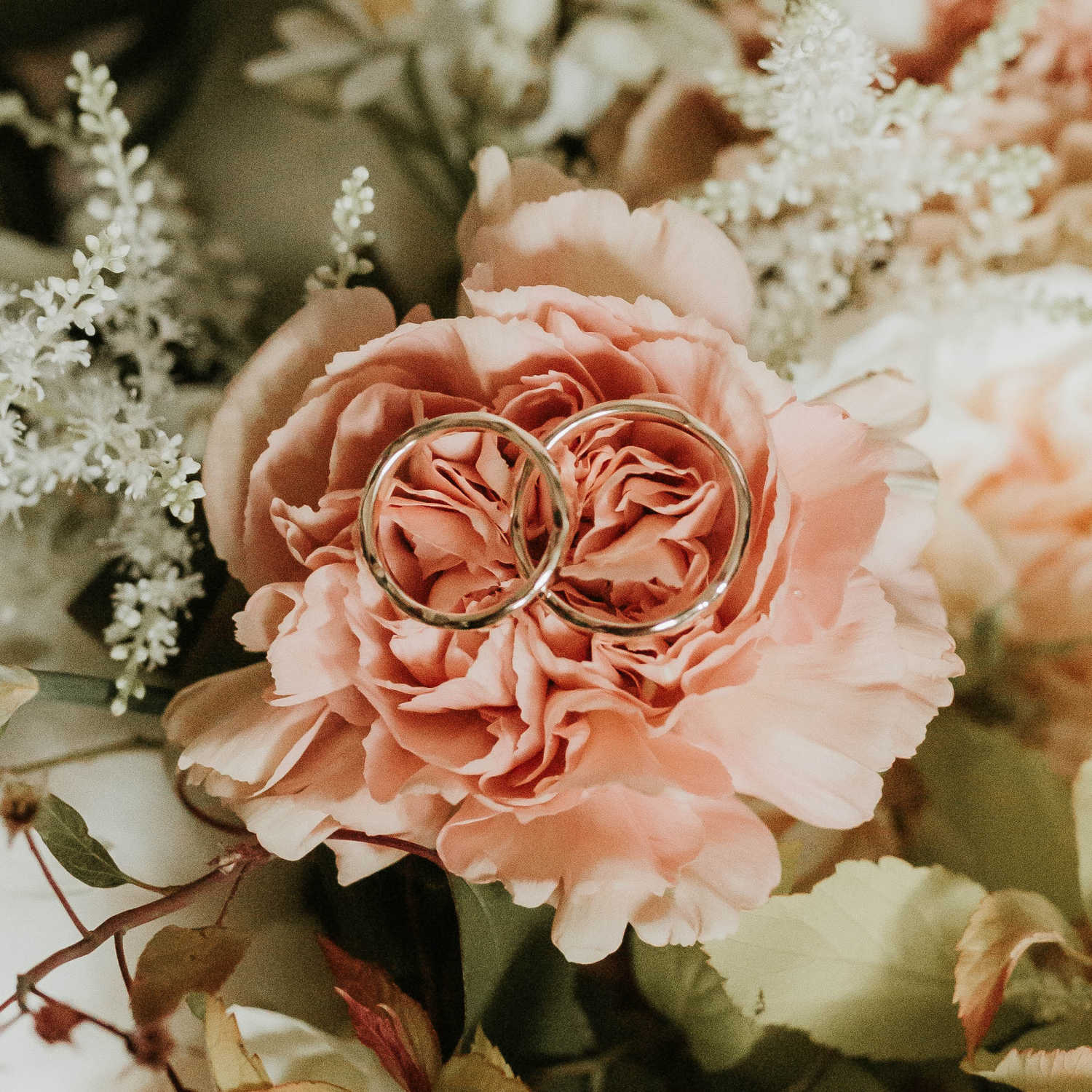
The Diamond Revolution
While diamonds had been used in engagement rings for centuries among the nobility, it wasn’t until the 20th century that they became the norm for the general public. This shift can be largely attributed to a brilliant marketing campaign by De Beers in the 1930s and 1940s.
The slogan “A Diamond is Forever,” created in 1947, cemented the gemstone’s place in popular culture as the ultimate symbol of enduring love. This campaign boosted diamond sales and established the modern tradition of diamond engagement rings followed by wedding bands.
The Anatomy of a Modern Wedding Ring
Today’s wedding rings are marvels of craftsmanship, combining precious metals, gemstones, and intricate designs. Understanding the components and options available can help couples make informed decisions when choosing their perfect rings.
Precious Metals
Gold stays a popular choice for wedding rings, available in several colours:
- Yellow gold: The traditional choice, with a warm, classic appearance.
- White gold: Offers a similar look to silver or platinum.
- Rose gold: A trendy option with a romantic, pinkish hue.
Platinum has gained favour for its durability and hypoallergenic properties. It’s more expensive than gold but maintains its colour and shine without re-plating.
Alternative metals like titanium, palladium, and tungsten offer unique looks and properties:
- Titanium: Lightweight and strong, ideal for people who have active lifestyles.
- Palladium: A member of the platinum family, offering similar properties at a lower cost.
- Tungsten: Extremely durable and scratch-resistant, but cannot be resized.
Design Elements
The design possibilities for wedding rings are virtually endless. Some popular styles include:
- Classic plain bands: Timeless and versatile.
- Eternity bands: Featuring gemstones all the way around the ring.
- Vintage-inspired designs: Incorporating filigree, milgrain, or engraving.
- Mixed metal rings: Combining two or more metals for a unique look.
Engraving adds a personal touch, allowing couples to include dates, names, or meaningful phrases inside their rings.
Techniques like channel-setting, pavé, and bezel-setting can create stunning visual effects with gemstones.
Your content goes here. Edit or remove this text inline or in the module Content settings. You can also style every aspect of this content in the module Design settings and even apply custom CSS to this text in the module Advanced settings.
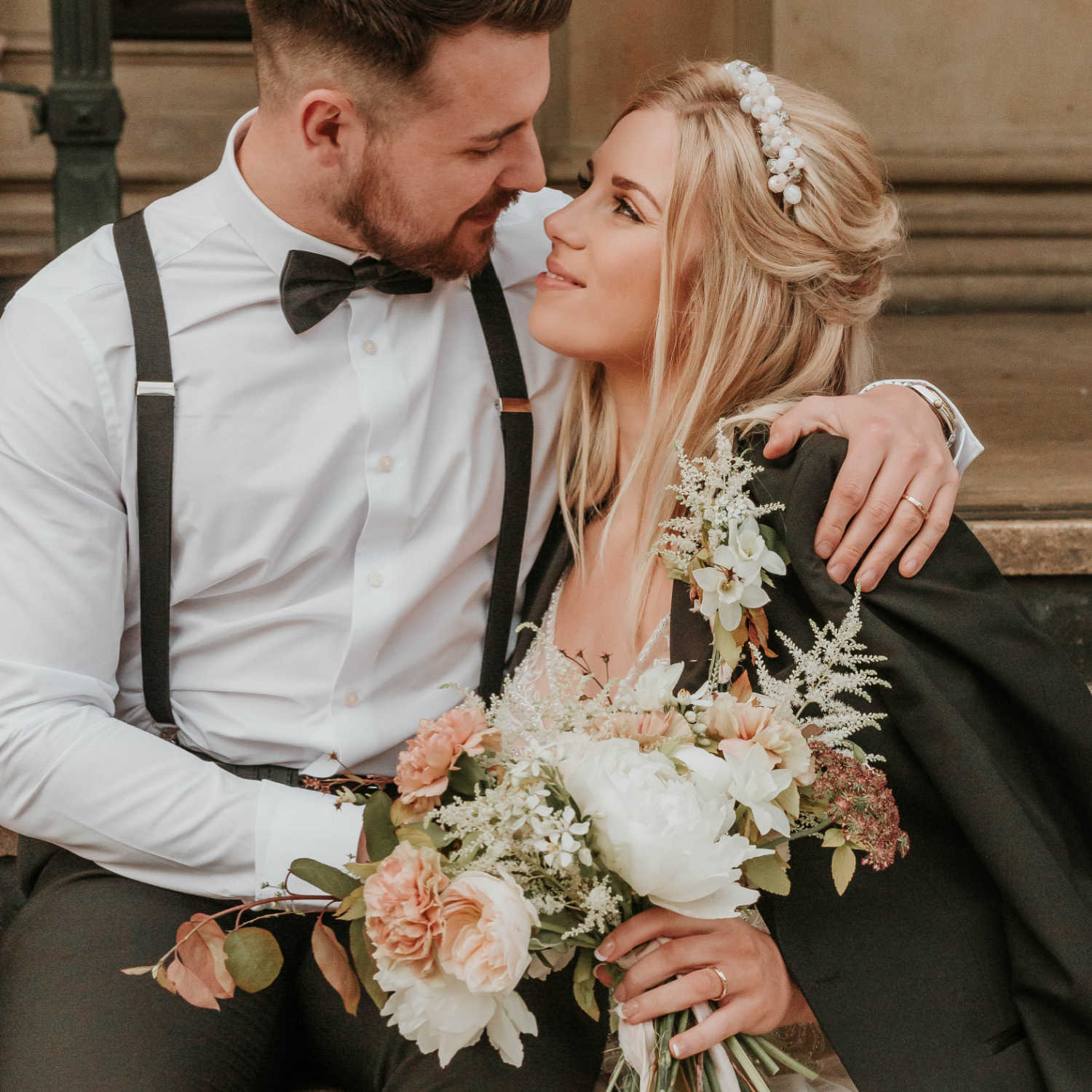
Cultural Significance and Global Traditions
Wedding ring customs vary widely across cultures, reflecting diverse beliefs and traditions around marriage and commitment.
Western Traditions
In many Western countries, the ring is worn on the fourth finger of the left hand, stemming from the ancient belief about the “vena amoris.” The exchange of rings typically occurs during the wedding ceremony, symbolising the couple’s vows and commitment.
In some countries, like Germany and the Netherlands, the engagement ring becomes the wedding ring, simply moving from the left hand to the right during the ceremony.
Eastern Orthodox Traditions
In many Eastern Orthodox Christian traditions, wedding rings are worn on the right hand rather than the left. This custom is based on the belief that the right hand is the hand of blessing and authority.
Jewish Traditions
Jewish wedding ceremonies often feature a plain gold band without stones or engravings. This simplicity symbolises the purity of the couple’s love and the unbroken circle of marriage.
The ring is placed on the index finger of the right hand during the ceremony, though it’s typically moved to the ring finger afterward.
Hindu Traditions
In traditional Hindu weddings, the bride may receive a toe ring (bichiya) or a ring worn on the left hand. The groom might receive a ring, but it’s not always part of the ceremony.
Intricate henna designs often adorn the bride’s hands and feet, serving as temporary, symbolic “rings.”
Chinese Traditions
In Chinese culture, wedding rings are a relatively new adoption from Western practices. Traditionally, other jewellery like bangles or necklaces held more significance.
Today, many Chinese couples exchange rings along with other traditional gifts.
Your content goes here. Edit or remove this text inline or in the module Content settings. You can also style every aspect of this content in the module Design settings and even apply custom CSS to this text in the module Advanced settings.
The Modern Wedding Ring Landscape
Today’s couples face a wealth of options when choosing their wedding rings. Several trends and considerations are shaping the industry:
Ethical Sourcing and Sustainability
Concerns about conflict diamonds and the environmental impact of mining have led to a rise in ethically sourced and sustainable wedding rings. Many jewellers now offer transparency about their supply chains, allowing couples to make informed decisions aligned with their values.
Recycled metals are becoming more popular, reducing the need for new mining. Some companies even offer programs to create new rings from old family jewellery, adding sentimental value to sustainable practices.
Alternative Materials
While precious metals stay popular, many couples are exploring choice materials for their wedding rings:
- Silicone rings have gained popularity among those with active lifestyles or jobs where metal rings might be impractical or dangerous.
- Wood rings offer a natural, eco-friendly option with unique grain patterns.
- Ceramic rings provide durability and hypoallergenic properties in a range of colours.
- Meteorite inlays give rings an otherworldly touch, appealing to science enthusiasts.
These choice materials allow couples to express their personalities and lifestyles through their ring choices.
Customization and Personalisation
Advances in technology have made it easier than ever for couples to create truly one-of-a-kind rings:
- 3D printing allows for complex designs that would be difficult or impossible to create by hand.
- Computer-aided design (CAD) software let’s couples visualise and adjust their ring designs before production.
- Laser engraving enables intricate patterns and personal messages to be added to rings.
Some unique personalization ideas include:
- Incorporating fingerprints or DNA patterns into the ring design.
- Creating rings based on sound waves of the couple saying their vows.
- Embedding small mementos or materials from significant locations in resin inlays.
Gender-Neutral Designs
As societal norms evolve, so do wedding ring designs. Many jewellers now offer gender-neutral collections, moving away from traditionally masculine or feminine styles.
These designs often feature clean lines, mixed metals, or unique textures that appeal to all genders.
Choosing the Perfect Ring
Selecting a wedding ring is a deeply personal decision that requires careful consideration. Here are some key factors to keep in mind:
Budget Considerations
Determine what you’re comfortable spending, remembering that a ring’s value comes from its meaning, not its price tag. Consider the long-term value:
- Durability of materials
- Potential for resizing or upgrading
- Insurance costs
Don’t forget to factor in long-term maintenance costs, especially for rings with intricate designs or delicate gemstones.
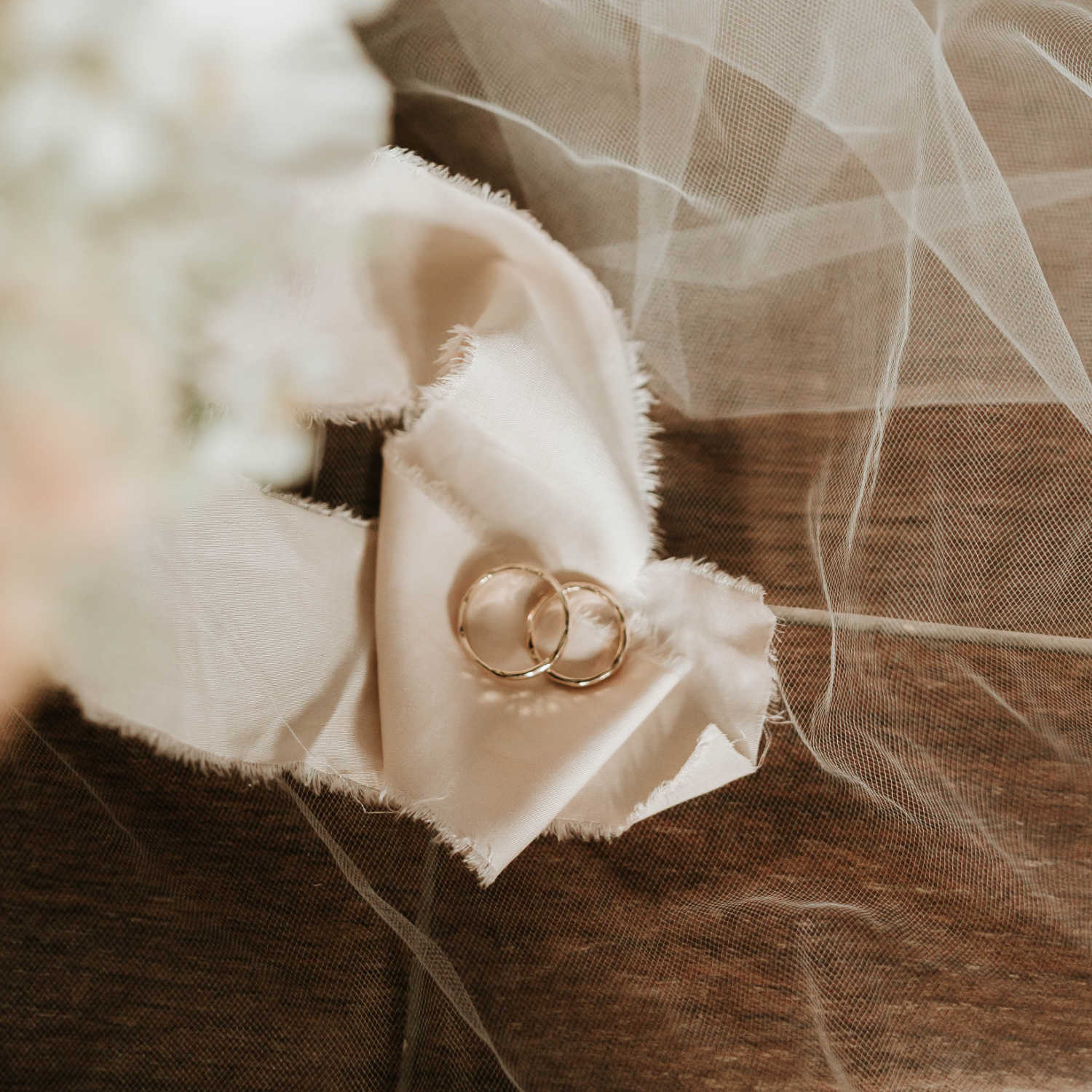
Lifestyle Compatibility
Your ring should fit seamlessly into your daily life:
- If you work with your hands, consider a low-profile design or durable material.
- For those in medical or food service professions, smooth, easy-to-clean rings are ideal.
- Active people might prefer silicone rings for everyday wear, saving metal rings for special occasions.
Personal Style
Your wedding ring is a reflection of your personal taste:
- Consider how it will pair with your other jewellery.
- Think about whether you prefer classic styles or more modern designs.
- Decide if you want your ring to stand out or blend in with your overall look.
Don’t be afraid to buck tradition if it doesn’t suit you. Your ring should be something you’re excited to wear every day.
Matching vs. Complementary Rings
Decide whether you and your partner want matching rings or complementary designs:
- Matching rings can symbolise unity and shared taste.
- Complementary rings allow for individual expression while maintaining a cohesive look.
- Some couples opt for completely different styles that reflect their unique personalities.
Comfort and Fit
A comfortable fit is crucial for a ring you’ll wear daily:
- Consider different profile shapes (flat, curved, or domed) to see what feels best.
- Try on rings at different times of day, as fingers can swell.
- If you have large knuckles, consider a hinged or split-shank design for easier removal.
Future Considerations
Think about how your ring choice might evolve over time:
- Will the style still appeal to you in 10, 20, or 50 years?
- Is there potential to add to or upgrade the ring for anniversaries?
- How will the material age? Some develop a patina, while others stay unchanged.
Ethical and Environmental Impact
If sustainable wedding rings are important to you:
- Research the policies of different jewellers and manufacturers.
- Consider recycled metals or reused gemstones.
- Look for certifications like Fairtrade Gold or conflict free diamonds.
Caring for Your Wedding Ring
A wedding ring is meant to last a lifetime, but it requires proper care to maintain its beauty and integrity. You can read my care guide for wedding rings here.
The Future of Wedding Rings
As technology advances and societal norms evolve, the concept of wedding rings continues to adapt:
Technological Integration
- Embedded NFC chips could allow rings to store digital information or make payments.
- Augmented reality might enable virtual try-ons or customization experiences.
- Advanced materials could create rings that change colour or pattern on demand.
Changing Traditions
- Some couples are opting for matching tattoos instead of or in addition to rings.
- Temporary or dissolvable rings are being explored for cultures or people who prefer non-permanent symbols.
- Multi-functional jewellery that can transform from rings to pendants or bracelets offers versatility.
Sustainability Focus
- Increased demand for ethically sourced materials may lead to innovations in lab-grown gemstones and recycled metals.
- Biodegradable or compostable materials could offer eco-friendly alternatives for temporary wear.
Personalization and Storytelling
- Advanced engraving techniques might allow for microscopic photos or entire love stories to be etched into rings.
- Custom alloys could incorporate meaningful materials, like sand from a favourite beach or metal from a significant object.
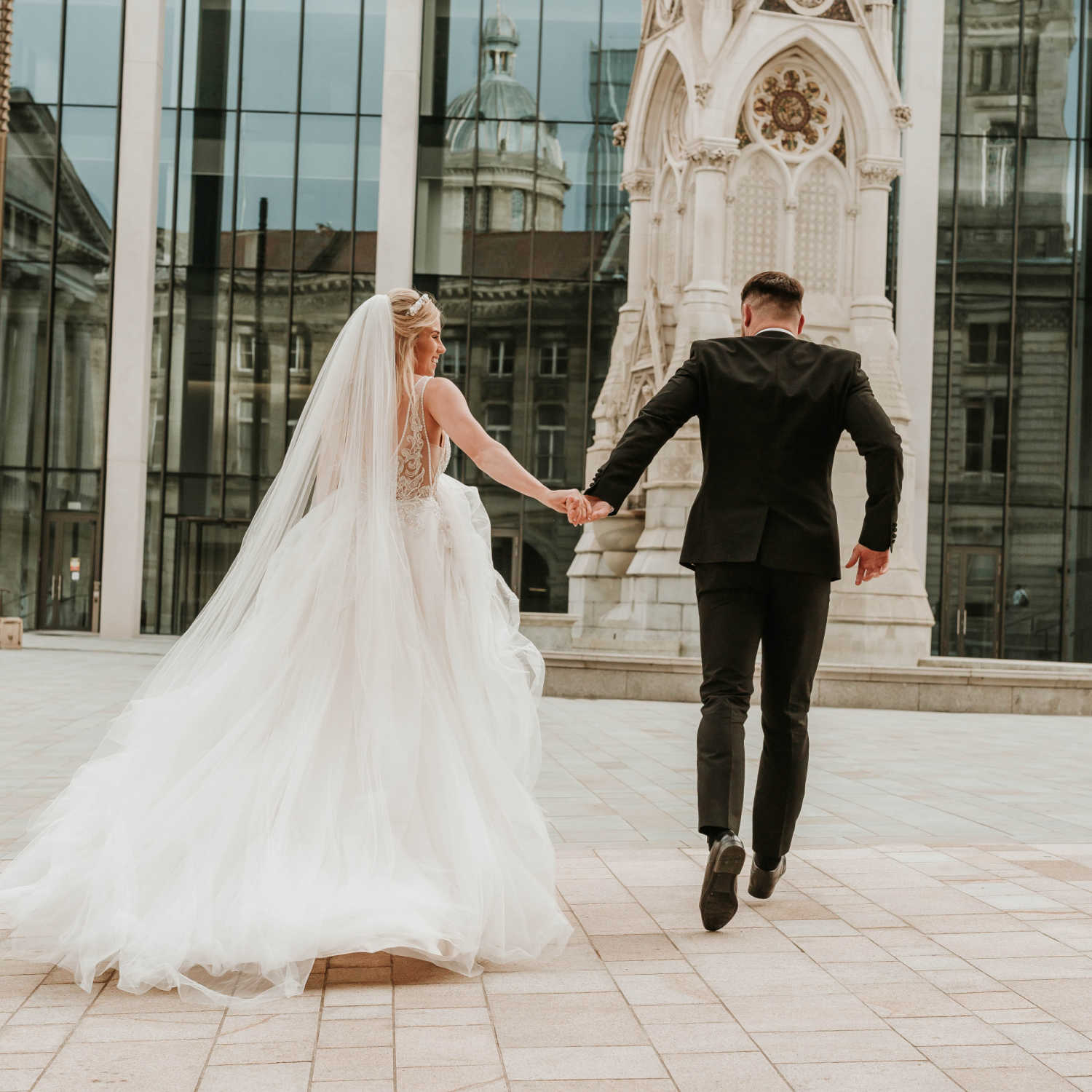
Key Takeaways
- Wedding rings have a rich history dating back thousands of years, evolving in materials and design while maintaining their core symbolism.
- Modern couples have a vast array of options, from traditional precious metals to choice materials and smart technology.
- Cultural traditions significantly influence wedding ring customs around the world, reflecting diverse beliefs about marriage and commitment.
- Choosing the perfect ring involves considering budget, lifestyle, personal style, and ethical concerns.
- Proper care and maintenance can confirm your wedding ring lasts a lifetime, preserving its beauty and significance.
- The future of wedding rings may include technological integration, changing traditions, and a greater focus on sustainability and personalization.
- Despite evolving styles and preferences, the basic symbolism of eternal love and commitment stays at the heart of wedding ring traditions.
Photo credit – Thank you to the team: Concept and Photography: @sophiemortphotography, Models: @ts_modelcouple, Hair: @sirenhairart, Makeup: @charlottelily.makeup, Florist: @inbloomflowers.studio, Dress: @romanticdreamsbridal, Rings: @eanjewellery, Hair accessories: @rocks.revival.accessories, Venue: The Button Factory

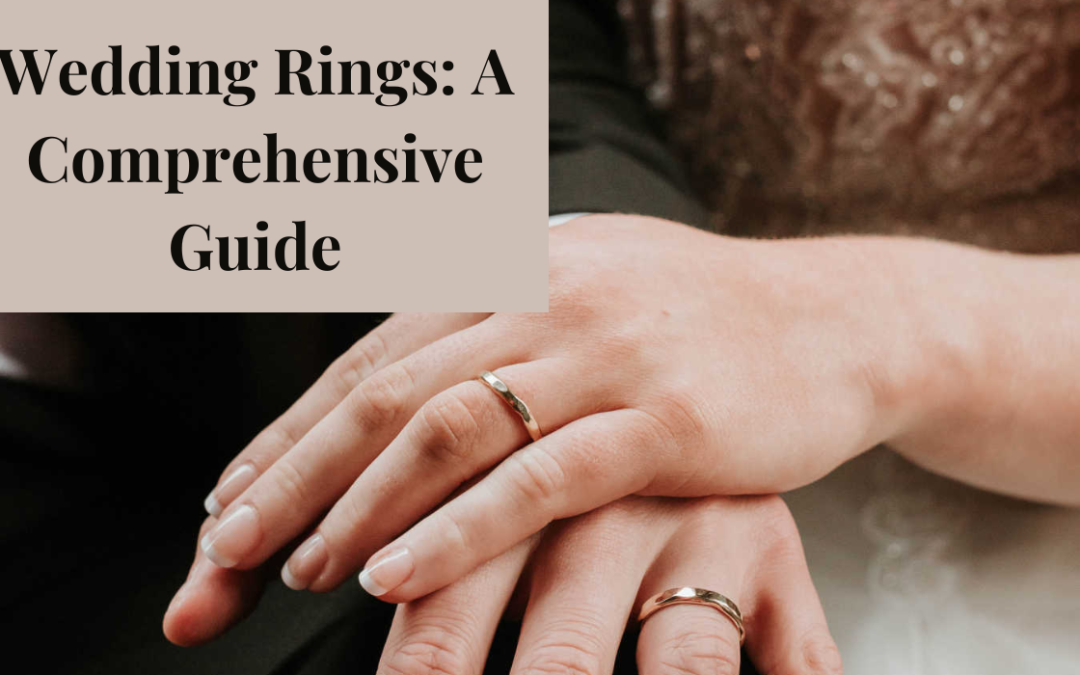
That’s so interesting!
Thank you Sonja